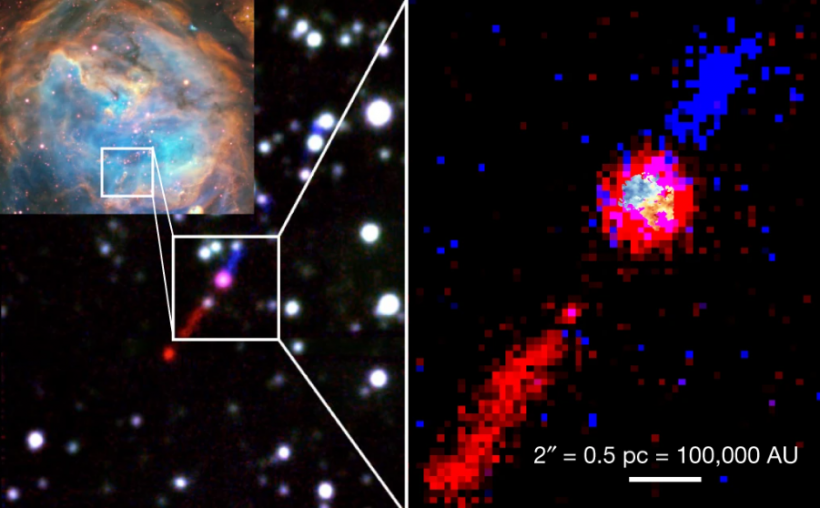Astronomers have recently made an awe-inspiring discovery within our neighboring galaxy, the Large Magellanic Cloud (LMC). A colossal newborn star, blazing with a brilliance 10,000 times greater than our own sun, has emerged as the centerpiece of this cosmic revelation, Reuters details in a report.
The discovery, as reported by researchers in a study published in the esteemed journal Nature, showcases an extraordinary find using the Atacama Large Millimeter/submillimeter Array (ALMA) telescope situated in Chile's Atacama Desert, pushing the boundaries of our understanding of star formation beyond the confines of our Milky Way.
 (Photo : Image via Nature)
(Photo : Image via Nature)
Astronomers unveil an extraordinary discovery in the Large Magellanic Cloud-a colossal newborn star defying cosmic norms, shedding light on celestial infancy and star formation beyond our Milky Way.
Never-Before-Seen Cosmic Spectacle
Intriguingly, this colossal star, estimated to be 10 to 20 times more massive than our sun, bears the characteristics of a celestial infancy.
Encircled by a swirling circumstellar disk spanning an astonishing 12,000 times the Earth-Sun distance, this stellar giant is not merely undergoing birth but also exhibiting a remarkable expulsion of material into space.
This is an unprecedented phenomenon associated with smaller stars but previously unseen in such massive counterparts outside our galaxy.
Astronomers Shed Light on the Phenomenon
Anna McLeod, the lead author of the study from Durham University, England, expressed profound excitement, stating, "While we know of many stars like this one being formed in the Large Magellanic Cloud and other galaxies, we have never before observed a circumstellar accretions disk outside of the Milky Way."
The novelty of this discovery lies not only in the sheer magnitude of the star but also in its visibility. Unlike similar stars in our Milky Way, typically shrouded by the nebulous veils of gas and dust during their formative years, this stellar giant stands conspicuously visible in optical wavelengths, owing to the unique environmental properties of the LMC-a galaxy distinct in its composition with less dust and lower metallic elements than our own.
Read Also: New NASA Data from Webb Telescope Confirms Interesting Findings on Planet-Forming Disks
Jonathan Henshaw, a study co-author from Liverpool John Moores University, emphasized the significance, noting, "The formation of high-mass stars has been puzzling astronomers for decades, and so building a picture of how this happens under different physical conditions is both an important step and super exciting."
This groundbreaking observation expands our cosmic narrative, challenging existing paradigms of star formation. It not only unlocks mysteries surrounding the birth and evolution of colossal stars but also provides invaluable insights into the diverse environments that foster celestial genesis in galaxies beyond our own.
The discovery of this celestial prodigy underscores the pivotal role of technological advancements such as ALMA in unraveling the mysterious cosmos.
Stay posted here at Tech Times.
Related Article: NASA Fermi Mission Discovers 300 Gamma-Ray Pulsars: Here's What That Means for Astronomy
 (Photo : Tech Times Writer John Lopez)
(Photo : Tech Times Writer John Lopez)









